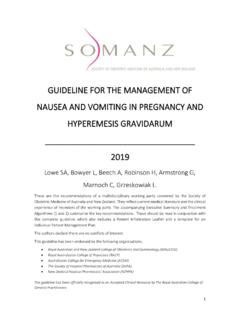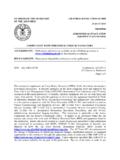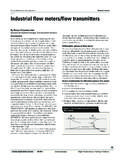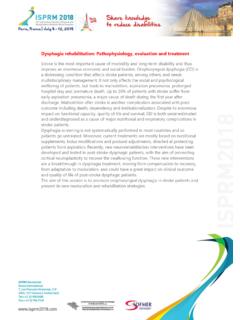Transcription of Guideline for the Management of Hypertensive Disorders of ...
1 Guideline for the Management of Hypertensive Disorders of Pregnancy 2014 Lowe SA, Bowyer L, Lust K, McMahon LP, Morton MR, North RA, Paech MJ. Said JM. These are the recommendations of a multidisciplinary working party convened by the Society of Obstetric Medicine of Australia and New Zealand. They reflect current medical literature and the clinical experience of members of the working party. 1 CONTENTS Section Page Abbreviations 2 1. Definition of hypertension in pregnancy 3 2. Recording blood pressure in pregnancy 4 3. Classification of Hypertensive Disorders in pregnancy 5 4. Investigation of new onset hypertension after 20 weeks 9 5.
2 Management of preeclampsia and gestational hypertension 11 6. Eclampsia 18 7. Fetal Surveillance in Hypertensive diseases of pregnancy 19 8. Resolution of preeclampsia and gestational hypertension 21 9. Chronic hypertension in pregnancy 22 10. Anaesthetic considerations 26 11. Preconception Management and prophylaxis 28 12. Prevention of preeclampsia 30 13. Longterm consequences 33 14. Auditing outcomes 34 15. References 36 2 ABBREVIATIONS ABPM Ambulatory blood pressure monitoring AFV Amniotic fluid volume ALT Alanine transaminase AOR Adjusted odds ratio APPT Activated partial thromboplastin time AST Aspartate transaminase BW Birth weight CI Confidence Interval ECG Electrocardiogram FBC Full blood count FGR Fetal growth restriction HELLP Haemolysis, elevated liver enzymes and low platelet syndrome Hr Hour(s)
3 INR International normalised ratio ISSHP International Society for the Study of Hypertension in Pregnancy IU International units IV Intravenous K1 Korotkoff sound 1 K2 Korotkoff sound 2 Kg kilogram LDA Low dose aspirin LDH Lactate dehydrogenase LFT Liver function tests mcg microgram mg milligram min minute mL millilitre NICU Neonatal intensive care NPV Negative predictive value PCR Protein/creatinine ratio PlGF Placental growth factor RDS Respiratory distress syndrome RR Relative risk SFlt1 soluble fms like tyrosine kinase-1 SGA Small for gestational age UEC Urea, electrolytes and creatinine umol/L Micromole/litre U/S Ultrasound VEGF Vascular endothelial growth factor VTE Venous thromboembolism 3 GUIDELINES FOR THE Management OF Hypertensive Disorders OF PREGNANCY 2014 Lowe SA, Bowyer L, Lust K, McMahon L, Morton M, North RA, Paech M.
4 Said J. These are the recommendations of a multidisciplinary working party convened by the Society of Obstetric Medicine of Australia and New Zealand. They reflect current medical literature and the clinical experience of members of the working party. 1. Definition of hypertension in pregnancy Normal pregnancy is characterized by a fall in blood pressure, detectable in the first trimester and usually reaching a nadir in the second trimester. Blood pressure rises towards pre-conception levels by term. Hypertension in pregnancy is defined as: Systolic blood pressure greater than or equal to 140 mmHg and/or Diastolic blood pressure greater than or equal to 90 mmHg (Korotkoff 5) These measurements should be confirmed by repeated readings over several hours.
5 Elevations of both systolic and diastolic blood pressures have been associated with adverse maternal and fetal outcome and therefore both are important (1).There are several reasons to support the blood pressure readings above as diagnostic of hypertension in pregnancy: Perinatal mortality rises with diastolic blood pressures above 90 mmHg (2) Readings above this level were beyond two standard deviations of mean blood pressure in a New Zealand cohort of normal pregnant women (3) The chosen levels are consistent with International guidelines and correspond with the current diagnosis of hypertension outside of pregnancy Detecting a rise in blood pressure from booking or preconception blood pressure (> 30/15 mmHg), rather than relying on an absolute value has in the past been considered useful in diagnosing preeclampsia in women who do not reach blood pressures of 140 or 90 mmHg.
6 Available evidence does not support the notion that these women have an increased risk of adverse outcomes (4, 5). Nevertheless such a rise may be significant in some pregnant women, particularly in the presence of hyperuricaemia, proteinuria or a small for gestational age (SGA) infant and these women warrant closer monitoring. 4 Severe hypertension in pregnancy This Guideline recommends antihypertensive treatment for all pregnant women with blood pressure greater than or equal to 160mm Hg systolic or 110 mm Hg diastolic. Severe hypertension requiring urgent treatment is defined as a systolic blood pressure greater than or equal to 170 mmHg with or without diastolic blood pressure greater than or equal to 110 mmHg.
7 This represents a level of blood pressure above which the risk of maternal morbidity and mortality is increased (6, 7). This degree of hypertension requires urgent assessment and Management . Increasing evidence exists that cerebral perfusion pressure is altered in pregnant women making them more susceptible to cerebral haemorrhage, posterior reversible encephalopathy syndrome and Hypertensive encephalopathy (8, 9). It is universally agreed that severe hypertension should be lowered promptly, albeit carefully, to prevent such complications (7, 10-13).[see Section 5] 2. Recording blood pressure in pregnancy Accurate blood pressure measurement is important as the level of blood pressure may result in changes in clinical Management (14).
8 The woman should be seated comfortably with her legs resting on a flat surface and her arm resting at the level of her heart. In labour, the blood pressure may be measured in lateral recumbency. Supine posture should be avoided because of the supine hypotension syndrome. The variation in blood pressure between arms is usually less than 10 mmHg, with 8% and 2% of pregnant women having an inter-arm difference of at least 10 mm Hg for systolic and diastolic blood pressure, respectively (15). The systolic blood pressure is accepted as the first sound heard (K1) and the diastolic blood pressure the disappearance of sounds completely (K5) (16). Where K5 is absent, K4 (muffling) should be accepted.
9 Correct cuff size is important for accurate blood pressure recording. A large cuff with an inflatable bladder covering 80% of the arm circumference should be used if the upper arm circumference is greater than 33 cm but less than 44 cm and a thigh cuff used if the upper arm circumference is greater than 44 cm (14, 17). This helps to minimise over-diagnosis of hypertension during pregnancy. The rate of deflation of the cuff should be 2 mm per second to avoid underestimating systolic blood pressure (18). Measurement Devices Mercury sphygmomanometers remain the gold standard for measurement of blood pressure in pregnancy, however, occupational health concerns are limiting their availability.
10 Self initiated home blood pressure monitors have provided major advantages for treatment and diagnosis of hypertension in the general community and are now widely used by both pregnant women and their clinicians. While automated devices may give similar mean blood pressure values to those obtained with mercury sphygmomanometry, there is wide intra-individual error and their accuracy may be further compromised in preeclamptic women (19-21). Only a few automated blood pressure monitors (Microlife WatchBP Home, Microlife 3 BTO-A and Omron T9P have been validated for use in normotensive or mildly Hypertensive pregnant women (22-24). In women with preeclampsia, especially those with severe hypertension, the accuracy of both Microlife 3 BTO-A and Omron M7 declined and these devices cannot be recommended for use in preeclampsia (25).)





